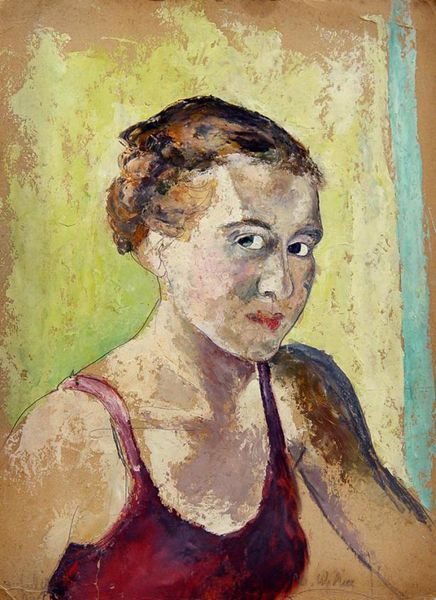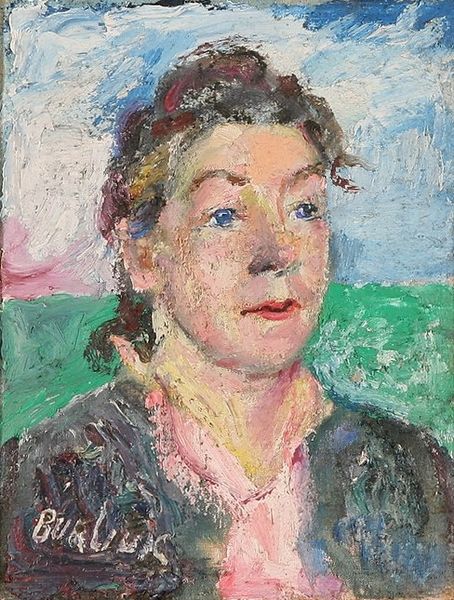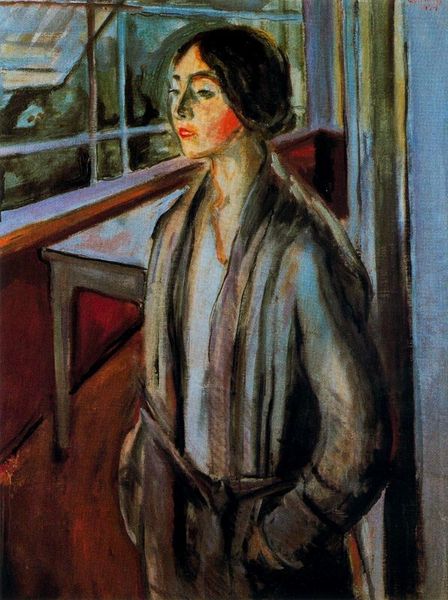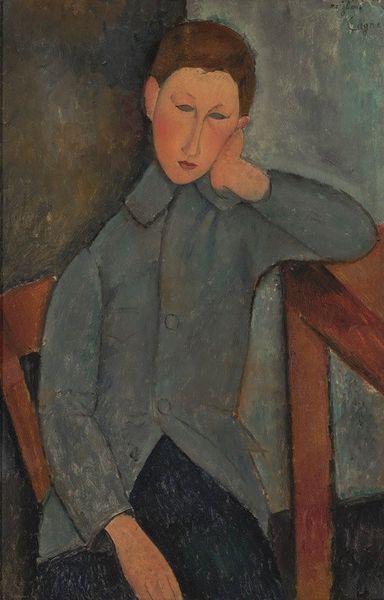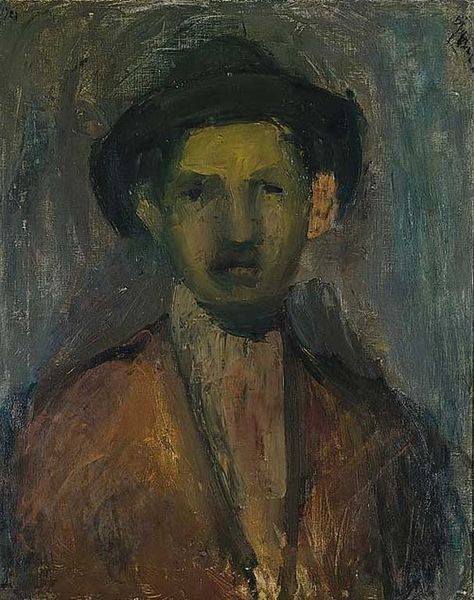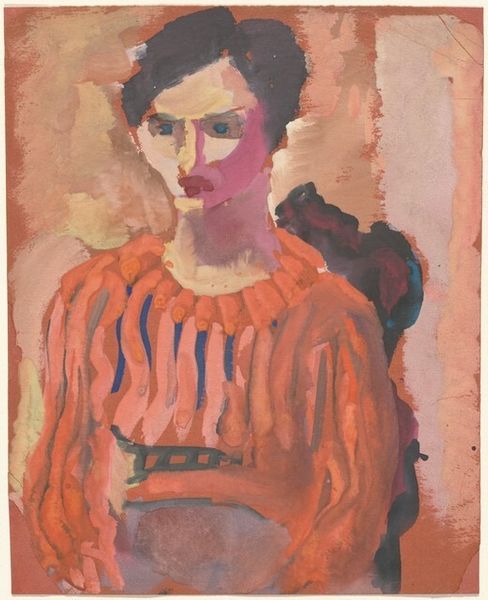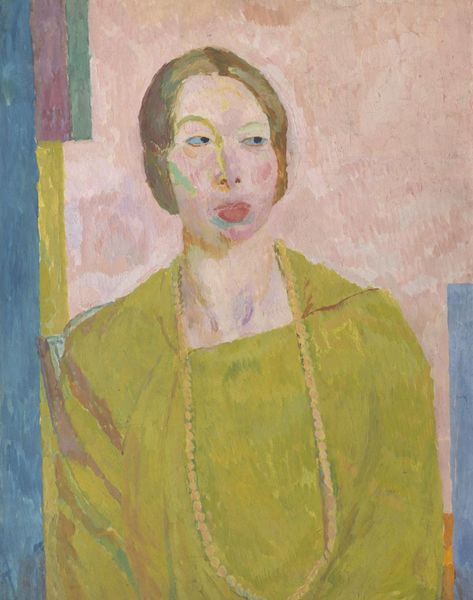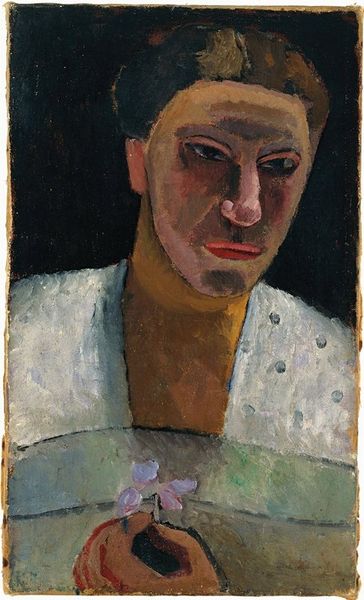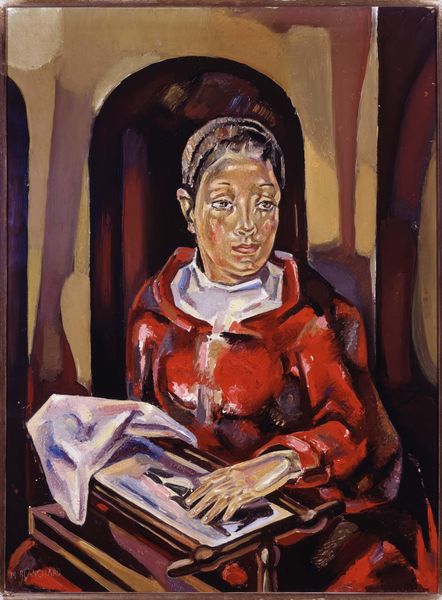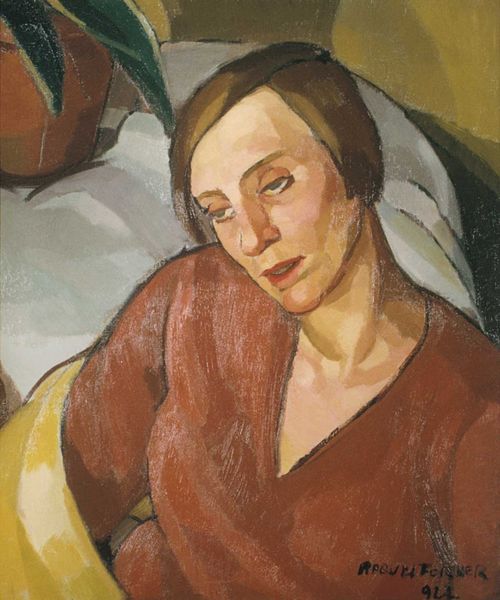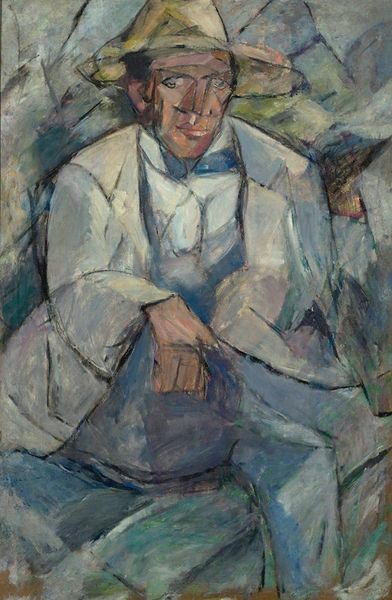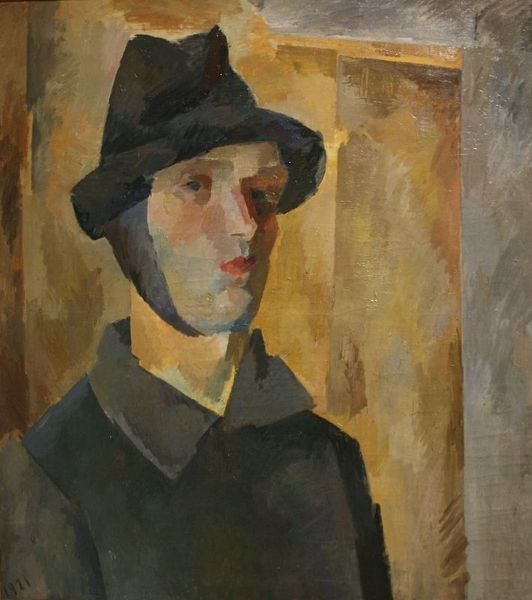
oil-paint
#
portrait
#
oil-paint
#
oil painting
#
expressionism
#
modernism
Copyright: Maggie Laubser,Fair Use
Curator: Welcome. Before us, we have Maggie Laubser's portrait, "The Pianist (Vere Bosman Di Ravelli)." Editor: The colors really strike me. That muted blue jacket and the bright red tie create such an interesting contrast. Curator: Laubser was deeply influenced by German Expressionism, which definitely comes through here. The distorted features, the bold colors--she used art to convey inner emotion rather than mere outward appearance. Editor: Absolutely, and look at those simplified forms! She's not interested in photographic realism. It's almost like she's built the face with planes of color. The brushstrokes are so visible, you can almost feel the texture of the oil paint. Curator: Laubser was working in a time when South African art was grappling with identity and place, so her engagement with expressionism put her somewhat at odds with the prevailing artistic trends in the region, leading her into obscurity in some ways, initially. This modernist approach definitely challenges traditional expectations of portraiture. Editor: The red tie is so intriguing too, acting as a diagonal thrust through the composition that anchors and enlivens it. It seems like Laubser really focuses the emotion there, doesn't she? Curator: Considering the history of South African portraiture, which was often used to reinforce social hierarchies, her approach in focusing on the inner life is subtly rebellious, a bold and individual stance in her cultural milieu. She sought a way of creating artwork that would mirror an emotional register above representational likeness. Editor: It does feel like there is an intention in how she portrays her sitter. So how do you feel it helps to express the sitter, if indeed it does? Curator: Knowing the social context of this piece gives it another layer of meaning. Looking closely, you appreciate the ways she navigated being both South African, and a female expressionist in the 20th century. Editor: Seeing how the cultural environment pushed her aesthetic decisions is illuminating, adding layers of intrigue to the overall effect. Thank you.
Comments
No comments
Be the first to comment and join the conversation on the ultimate creative platform.

